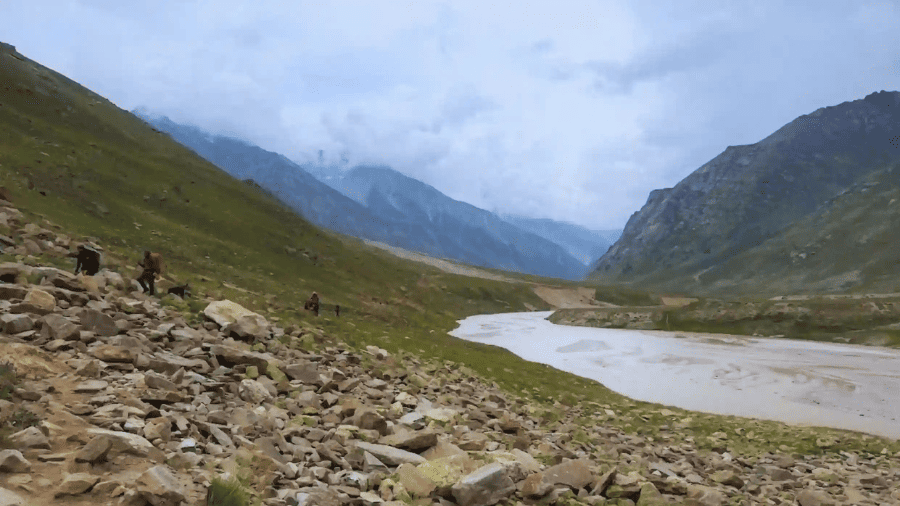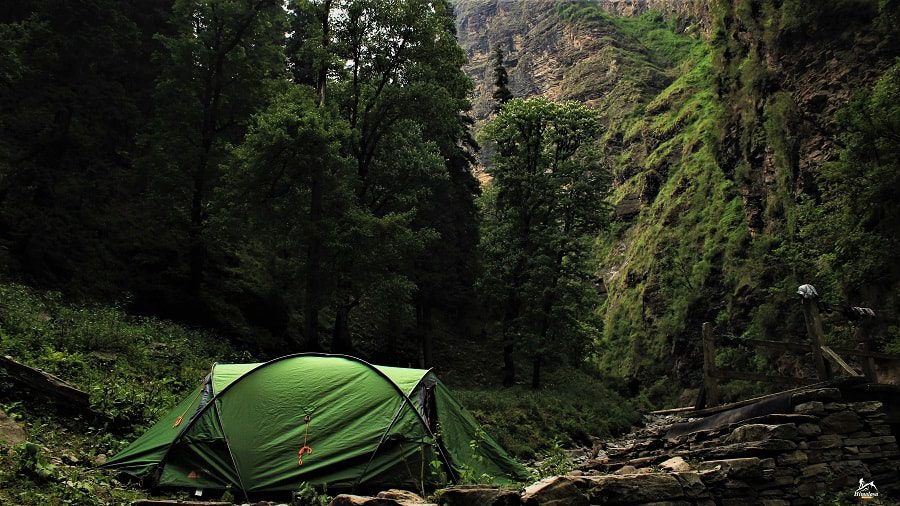
Technology And Innovations In Outdoor Trekking :
Innovation and trekking technology? One might wonder whether innovation is necessary. The world of trekking and expeditions is evolving rapidly with the advent of new technologies. These innovations are not only enhancing the safety and comfort of trekkers but also revolutionizing the entire trekking experience. From smart gear to advanced navigation tools, technology is making trekking more accessible and enjoyable for everyone. Here, we delve into the latest advancements that are shaping the future of trekking.
Trekking and expeditions are a part of travel that have evolved in modern society due to changes in technology. What these novelties have been doing is not only improving the level of safety and comfort of trekkers but also the overall concept of trekking. For the trekkers, innovation and trekking through technology is an idea of smart investments from gears to sophisticated navigation systems, companies continue to make trekking safer, easier, and fun for all kinds of people. In this paper, we explore the current innovations for outdoor technology that define the upcoming trend in trekking experiences.
1. Smart Clothing And Wearable Technology Market:

The most revolutions that can be stated in connection with trekking gear is making of intelligent clothes and wearable devices. This technology of intelligent clothes represents the next generation because they are capable of measuring an individual’s pulse, managing his or her temperature, and preventing hazardous environmental circumstances during trekking and any other outdoor activity.
- Temperature-Regulating Fabrics: NASA fabric known as Outlast for example is capable of capturing, storing and again radiating heat in order to regulate the body temperatures. This comes in handy when traveling for a trek where the climate and altitude may change now and then.
- Wearable Sensors: Wearables such as heart rate monitors, GPS trackers, smartwatches, and others are now part of clothing and accessories. These wearables include data on the rate of heartbeat, oxygen, a lamisil topical cream for toenail fungus, and a lotion that makes it easier for the trekkers to be on the lookout for their health and safety status during the trekking exercise.
2. Advanced Navigation Tools:
One of the most dreaded aspects during the trekking that trekkers encounter is getting lost in the middle of the forest, it is however important to note that modern navigation technology is a great help as they are quite reliable.
- GPS Devices: The older generations of GPS existed as standalone with new generations coming with built-in features such as topographic maps, route planning, and SOS features. Generally, in the market, there are devices such as Garmin in Reach Explorer+ that provide two-way satellite messaging, convivially enabling individuals on the trek to communicate.
- Augmented Reality (AR) Navigation: AR technology is gradually being integrated into trekking with the help of which trekkers receive an overlay of reality. Other similar applications to find trails, such as Gaia GPS, Peak Finder, and AllTrails, inform tourists about mountain peaks, hiking trails, and other points of interest using augmented reality.
3. Solar-Powered Gear:
Generating electricity for equipment in those areas can be a bit complicated, however, equipment fuelled by solar is coming in handy.
- Solar Chargers: They are compact in size and can recharge the battery of a trekker’s device without the need for normal electricity. items such as the Goal Zero Nomad Solar Panel are portable and can be fixed on a backpack allowing sun power on the hike.
- Solar-Powered Clothing: Clothing with solar panels is in the process of being invented by various companies who wish to bring change to the fashion industry. Some of these garments can generate a little electricity to charge tiny portable instruments such as phones and GPS units to enable the trekkers’ useful devices to remain on for the staking period.
4. Portable Water Purification Systems:
Water is essential in any trekking adventure and clean drinking water is no exception. Technology is improving portable water purification systems and most of the new products are very easy to use while trekking or other outdoor activity.
- UV Purifiers: The SteriPEN is an example of using ultraviolet light to eliminate bacteria, viruses, and protozoa in water. These are tiny and easy to carry, portable purifiers that are efficient and can take a litre of water in 90 seconds.
- Filtration Systems: Water filters of today like the Sawyer Mini and the LifeStraw are also very compact and simple to use. Some of these filters are able to purify natural water sources by eliminating well water and other unwanted ‘bugs,’ and give people safe drinking water on the move.
5. High-Tech Camping Equipment:

The other faction that has also undergone a technological boost is the camping gear thus improving the excises of the trekkers.
- Self-Inflating Sleeping Pads: Products such as sleeping pads like the Therm-a-Rest NeoAir are technologically developed in terms of the materials used and designed to give good insulation and comfort and also light in weight and small in size when packed.
- Smart Tents: Specific types of tents include those that are fixed with lights such as LED lights, or solar power, and those that can be connected to mobile devices such as smartphones. The Cinch! Smart Tent for instance comes with a solar power pack and LED lighting to enhance the comfort of trekkers who take ionic treks and an advanced internet connection makes it easier to connect for trekkers.
6. Drones Technology for Trekking:

Drones become a new trending technology for travelers in how they capture their trekking experiences and even manoeuvre through steep terrains.
- Aerial Photography and Videography: High-definition cameras installed on the drones help the trekkers to get high-quality aerial shots of their environment. This does not only improve the visibility of the trek document but also a perpetual view of the environment.
- Route Scouting: These flying devices can be utilized to relieve one team of the physically demanding chore of sprinting ahead and/or navigating sensitive terrain and, at the same time, offer detailed descriptions of what lies down the road. This would be especially helpful where there are numerous slippages or fairly obscure trails such as in the territory containing the trail.
7. Biodegradable and Eco-Friendly Gear:
Environmentalism seems to be a trend that trekkers cannot ignore; thus, there is an emergence of equipment that is friendly to the environment.
- Biodegradable Clothing and Equipment: What was initially marked by the use of traditional nylon and other materials has now evolved into the production of trekking gears by the same industry from biodegradable materials, thus cutting down on environmental degradation. Mirum is the product of the Natural Fiber Welding company and it is made from plant-based material hence fully biodegradable.
- Reusable and Sustainable Products: Starting from reusable bottles for carrying water, to bio-degradable packaging materials for food products for trekkers, people are opting for environmentally friendly products more and more. Currently, there are approaches that some brands such as Patagonia, and REI have taken to ensure producing long-lasting sustainable products.
8. Enhanced Safety Devices:
Since the life of a trekker are always at risk, specialists are developing new technologies that will enable the trekkers to protect themselves.
- Personal Locator Beacons (PLBs): Objects such as the ACR ResQLink can send out signals to the emergency services helping to give a lifeline in the unfortunate event of a crash. These small gadgets employ satellite systems to identify the user’s location, no matter the area’s accessibility.
- Avalanche Airbags and Detectors: Avalanche protection is important for trekkers who are going to trek in snowy or mountainous areas. Today there are life-saving airbags that can prevent the skier from getting buried under the snow and there are also beacon such as Black Diamond Recon BT to locate the buried victim.
9. Virtual Reality (VR) or Simulation Training:
One of the applications of Information and Communication Technology is Virtual Reality (VR) or Simulation Training.
The trekking and preparations both are equally important and the advancement in technology especially in VR is helping in preparing and training.
- Virtual Reality Training: Hence, through the use of VR simulations, trekkers will be able to have an actual feel of the ground and the conditions in advance. This may come in handy, especially for high-altitude treks or those treks that require technical skills, in this case, one may train with a rope and harness while being controlled.
- Simulated Altitude Training: There are reflections that such chests that create conditions as close as possible to high-altitude ones become more frequent, thereby assisting in acclimatization and training by trekkers. These training centers could mimic the oxygen concentration and the pressure that is characteristic of altitude training and hence can help in increasing physical fitness.
10. Digital Communities and Resources:
The outbreak of digital technology has seen trekkers massively come together to get properly informed and assisted.
- Online Communities and Forums: Reddit, Quora, Trekking forums, and other travel apps help the trekkers get to know other’s experiences, advice, and information on trekking. These communities are very useful, especially for those who want to venture into trekking for the first time or even those who engage in it as a profession.
- Mobile Apps: There are numerous trackers such as the All Trails, Strava, and Gaia GPS applications, which include the map, the review section, and the tracking section. These are some of the applications that make it easy for individuals to plan, map out, and document trekking experiences.
Conclusion of the Trekking with Technology & Innovations
Thus, the future of trekking looks promising and implies the constant integration of technological advancements in the spheres of safety, comfort, and accessibility. They range from smart clothing and navigation equipment to environmentally friendly equipment and VR training that is revolutionizing the exploration of the outdoors. With advancements in technology, there are many opportunities for trekking and expeditions in the future that are faster, safer, interactive, and environment-friendly for all.
Playing a pivotal role in enhancing safety, comfort, and accessibility. From smart clothing and advanced navigation tools to eco-friendly gear and Virtual Reality (VR) training, these innovations are transforming the way we explore the great outdoors. As technology continues to evolve, the possibilities for trekking and expeditions are endless, promising a more connected, sustainable, and exhilarating adventure for all.
Find out some of the best outdoor trekking packages in India-
- Kedarkantha Trek Package
- Har ki Dun Trek Package
- Valley of Flowers Trek Package
- Chopta Chandrashila Trek Package
- Dayara Bugyal Trek Package
- Kashmir Great Lakes Trek
- Brahmatal Trek Package
- Nag Tibba Trek
Contact Details:
Himalaya Shelter organizes customized trekking programs for Winter treks, Summer treks, Monsoon treks, High mountain passes treks, Glacier treks, Cultural Exploration treks, and many others. With Himalaya Shelter, you can expect to get the best trekking experience by trekking with trained trek leaders, getting excellent quality equipment, and enjoying delicious meals while savouring the beauty of Mother Nature. For more details Contact Us on…
Contact No: +91 9458386006
Email ID: info@himalayashelter.com
In Himalaya Shelter, we provide you with the option to customize your trekking experience. Whether you’re a solo traveller, a group of friends, or a family, you can opt for our personalized tailor-made trekking program. This customized trek will be exclusively designed for you, taking into account your specific requirements for transportation, accommodation, meals, and any other premium facilities you may need during the trek. No other participants will be added to your group. Choosing a customized trek will enable you to fully enjoy the trek with your loved ones.
About Author

Himalaya Shelter
Recent news

23 Dec 2025

20 Dec 2025

18 Dec 2025

16 Dec 2025

10 Dec 2025
Recommended Treks

Cost: ₹13500 | $154
Type: Moderate
Best Time: March, April, May, June, July, Aug, Sep and Oct


